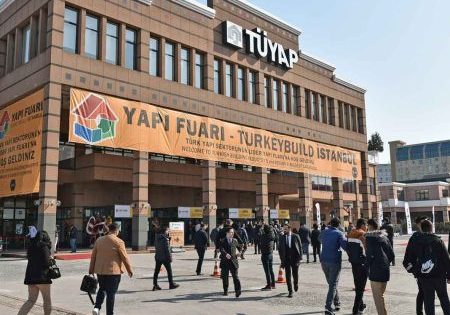Though still in use, the one-time fluid-raised elevator appears to be on its way out.
Almost five years ago, in the March 2017 edition of Subir & Bajar, Ángelo Martini, owner of GMV, one of the largest manufacturers of hydraulic equipment for lifts, asked himself the same question: Is the hydraulic lift dead?
Let’s revise a little bit of the hydraulic-elevator history. In 1867, a French, Leon Edoux, presented a new elevator at the international exhibition in Paris, and the idea of the lift with hydraulic propulsion was born. Some years later, in 1872, Otis took the idea and did its own development, beginning to commercialize it and, with success, had great acceptance in the industry. The company used water stored in large tanks to achieve the necessary pressure in large-diameter, buried pistons, easily lifting cargo up to three or four floors. The use of water, however, had to be replaced with oil, since the effects of corrosion caused quite a few inconveniences.
In the 1970s, in Italy, the brilliant idea arose of placing a pulley at the upper end of the piston. In this way, and through a 2:1 ratio using steel cables and a fixed point, it improved the performance of the hydraulic system, making users able to cover greater distances and not have to bury the piston.
By the 1980s, these indirect systems reached their maximum expression as an elevation solution, especially for European countries. They led the market for low-rise elevators, and were the ideal solution for old, multi-story buildings that did not have an elevator.
Advantages:
- Transmission of all stress directly to the floor, so users don’t need a structure to support the entire load.
- Reduced machine rooms, as well as locations, in the building
- Battery emergency lowering of elevator
- Use of the shaft’s gap
Disadvantages:
- The installed power must be high because the system does not use counterweights.
- The equipment needs a large amount of oil — on average, not less than 200 l.
- Due to pressure losses, a releveling system is necessary.
- Oil spills with the consequent contamination on the ground are frequent.
- Low speed and minimal performance are frequent in use.
By the 1990s, multinationals had already begun to work on a novel idea for the time: the elimination of the machine room for electromechanical equipment, with the appearance of new, extra-flat stepper electric motors. These designed a piece of equipment where the gearless traction machine was placed, attached to the guides and, through them, all the effort of the installation was transmitted to the floor. With this development, the elevator has already reached the hydraulic with the first two mentioned advantages.
Over the years, this system, called machine-room-less (MRL), has been improved. Traction machines were substantially upgraded using permanent magnets in the rotor. They achieved adequate weight, volume and power ratios to occupy very small spaces in overruns. For example, to lift loads of 450 kg at a speed of 1 m/s, the machines are seven times smaller, weigh about 90 kg, and the power does not exceed 4 kW.
In his note, Martini commented that they were developing electronic valves, adapting frequency variators and changing mineral oil for a biodegradable fluid. Until today, we saw none of this in the equipment that was previously being installed. Those technological innovations designed to fight the MRL were not implemented. Perhaps because of the cost, or perhaps because the appropriate technological development was not achieved, we continued to install hydraulic equipment with the technology of the 1990s.
With regard to energy demand, the conclusion of studies carried out in several communities in Europe indicate that hydraulic lifts require twice as much energy as modern MRL equipment. On the other hand, the reduction and recovery of energy achieved in electric lifts is notable, due to the development of new specific drivers for lifts that allow the injection of other sources of electrical current.
Hydraulic equipment must release heat at the time of descent to dissipate the potential energy gained on ascent. This energy cannot be recovered and, in many cases, coolers must be installed so that the heat does not alter the viscosity of the oil or affect the operation of the elevator.
Another advantage of these low-power motors is that a universal power supply (UPS) back-up can be implemented, allowing some battery-powered trips to be made in an emergency. The new designs make the most of the surface of the holes. This characteristic is very important, since they are highly indicated for the replacement of hydraulic equipment. But, in addition, it generates profits for the developers since they will have more surface suitable for sale.
For all that has been said, we can now answer the question at the head of this article: Yes, hydraulic equipment already has its days numbered. It will find its niche in short-travel and heavy-duty equipment, but no longer for passenger elevators.
Currently, there are systems that far exceed the advantages of hydraulic systems and are also more friendly to the environment. They require significantly less power, they recover energy, they do not use polluting fluids, grease or oil, they take up less space, they are easier to install, and their prices are similar.
Today, in the city of Buenos Aires, Argentina, no fewer than 1,000 hydraulic equipment parts are installed per year. Imagine spending half of the energy required by the hydraulic elevator by instead setting MRL systems. The most important thing is that we would avoid the use of 200,000 l of oil per year, which, according to the manufacturers, should be changed every 10 years or sooner if it the elevator is contaminated with water or other elements, as in the case of a burnt engine. Eliminating the potential risk through which much of that fluid could spill or not be properly disposed of will help protect the environment.
Get more of Elevator World. Sign up for our free e-newsletter.









